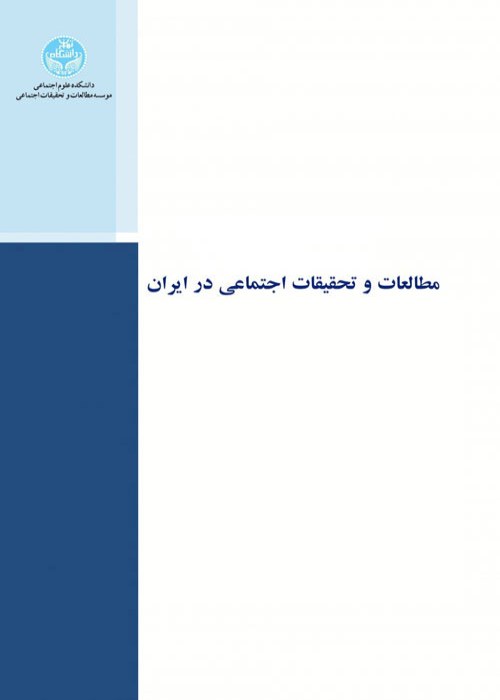The Relationship between Religiosity and Family Values with Fertility Desires and Intention among Married Women in Tehran
In addition to physiological factors, the determinants of fertility levels in different societies include various economic, social, political, environmental and cultural factors. The impact of these factors on fertility varies across different populations and subgroups. Thus, fertility and attitudes toward childbearing, are not only shaped by the economic factors and costs of parturition, but are also significantly affected by the cultural and societal factors.The purpose of the present study is to investigate the relationship between religiosity and family values, with childbearing desires and intentions among married women in Tehran.
The research is based on a survey conducted among a sample of 398 married women using multi-stage stratified sampling method in Tehran. In this study, religiosity and its dimensions (belief, ritual, experiential, consequential) have been analyzed according to the Glock and Stark measure and family values using Inglehart's theory in two aspects of traditional (material) and modern (metamaterial) values.
The results showed that mean number of children ever born for women in this study is 1.58 children and the ideal average fertility is 1.95 children. Around 74 percent of women in the study did not intend to give birth to another child, while nearly 40 percent of women considered only one child as ideal. The results of bivariate analysis showed no significant relationship between religiosity and its dimensions with fertility desires, but religiosity can affect women’s fertility intentions. Also, family values are significantly associated with fertility tendencies and intentions. The results of path analysis showed that family value variables (beta coefficient of 0.243) was the sole significant proximate determinant of fertility desires. Age and socio-economic status while directly affecting desires to have children, influenced fertility ideals through religiosity and family values indirectly. Logistic Regression analysis revealed that religiosity and family values had significant impact on intentions in having children but there was no relationship with The results of logistic regression showed variables of religiosity and family values has a significant relationship with fertility intention but the relationship between the socioeconomic status and fertility intention was not significant. Finally, it can be said women's fertility behaviors are influenced by the socio-economic, cultural and demographic context of society.
Religiosity and family values as a social and cultural structure play a decisive role in the formation of reproductive behaviors. Fertility behavior as the most important variable of population dynamics is a multifaceted issue and a wide variety of economic, social, and cultural factors influence fertility through complex mechanisms. Therefore, it is vital to identify determinants of fertility behavior in order to design appropriate policies in the country. Government policies must also be in line with the desires and interests of women and families.
- حق عضویت دریافتی صرف حمایت از نشریات عضو و نگهداری، تکمیل و توسعه مگیران میشود.
- پرداخت حق اشتراک و دانلود مقالات اجازه بازنشر آن در سایر رسانههای چاپی و دیجیتال را به کاربر نمیدهد.



